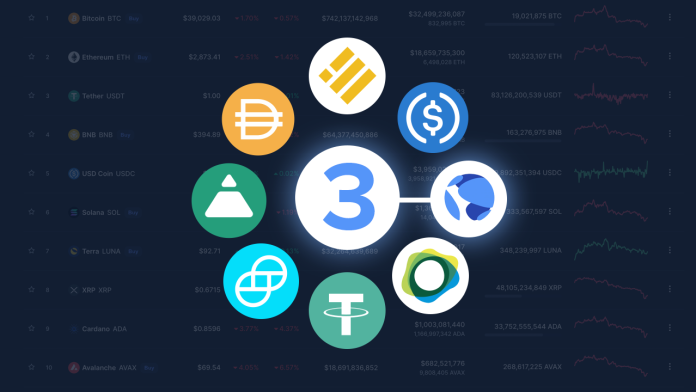tl;dr Summary: Stablecoins have received a lot of attention over the last year. Whether it be investors, law makers, or crypto enthusiasts, understanding stablecoins and their dynamics has become a topic of interest. NEAR Protocol’s $USN creates an interesting conversation on stablecoin differentiation. As competition amongst stablecoins grows, understanding their nuanced differences will become important.
Near Protocol, the scalable blockchain that recently raised $350 million in funding from Tiger Global, Hashed, and others, recently launched their Stablecoin $USN in collaboration with the DAO Decentral Bank. Stablecoins, for those who didn’t read my last article on the topic, are a form of digital currency that attempts to peg its value to some external reference such as the United States Dollar. At its surface, the concept can seem sort of dull but recent activity surrounding stablecoins brings to the forefront some fascinating questions.
For example, why is everyone interested in stablecoins suddenly? Do stablecoins compete with one another?
This article will hopefully give you some insight into these questions.
Why Everyone is Talking About Stablecoins:
The conversation on stablecoins has been happening for a while but really picked up steam in the fall of 2021 when the US government took notice of the explosive adoption stablecoins had been enjoying. Some of their main concerns were as follows:
1) Unregulated: Issuers of stablecoins were essentially acting as a financial institution without being subject to the usual regulations of one.
2) Transparency: This made officials uneasy since it meant that stablecoins weren’t responsible for showing what they were doing with their billions of dollars in reserves.
3) Liquidity: And thus, couldn’t provide meaningful certainty to users that they could exchange for their money back.
As a result, a lot of conversations on stablecoins have been focused on the way that a reserve is able to guarantee a cash back on their stablecoin. This conversation has only become more prevalent as recent volatility in the crypto and capital markets continue to evolve. For example, Terra’s Anchor Protocol, the blockchain’s largest DeFi platform, hit their highest total value locked last month.
USN and other Stablecoins:
So, what makes the launch of NEAR Protocol’s USN so interesting? Well, it brings to the conversation couple of items:
1) Network Token Volatility: Creating an alternative network native currency for people to directly mint their money to.
2) Backed Partnerships: Backing a stablecoin in coordination with a high value partner like Decentral Bank to further grow your network.
3) High-Yield Incentives: A built-in 10% minimum yield that encourages people to hold their money on USN rather than alternatives.
While other stablecoins may have offered these items before, the launch of USN has showcased the nuanced importance of these aspects across all stablecoins.
For UST, Terra’s stablecoin, they not only created their own alternative network native currency, but they also provide an attractive near 20% yield for holding onto UST through their lending and borrowing system Anchor Protocol.
For Tron, they recently launched their own alternative network native currency and claim to provide an even more impressive 30% yield to holders of their stablecoin, USDD.
For USDC, as discussed previously, their partnership with Blackrock was of particular focus. While USDC is not the official stablecoin of any particular network, their institution partnership does give their reserves more security and reliability.
What’s Next:
The market for stablecoins, which was mainly dominated by USDT and USDC, has started to see a shift towards network native stablecoins which can offer more attractive yield rates and network specific partnerships. This evolution in stablecoins showcases a competitive dynamic between the offerings of network-native stablecoins and outside alternatives.
It is likely that we will continue to see this dynamic into the future as the incentive of lucrative cash reserves produced by stablecoins becomes increasingly attractive.






